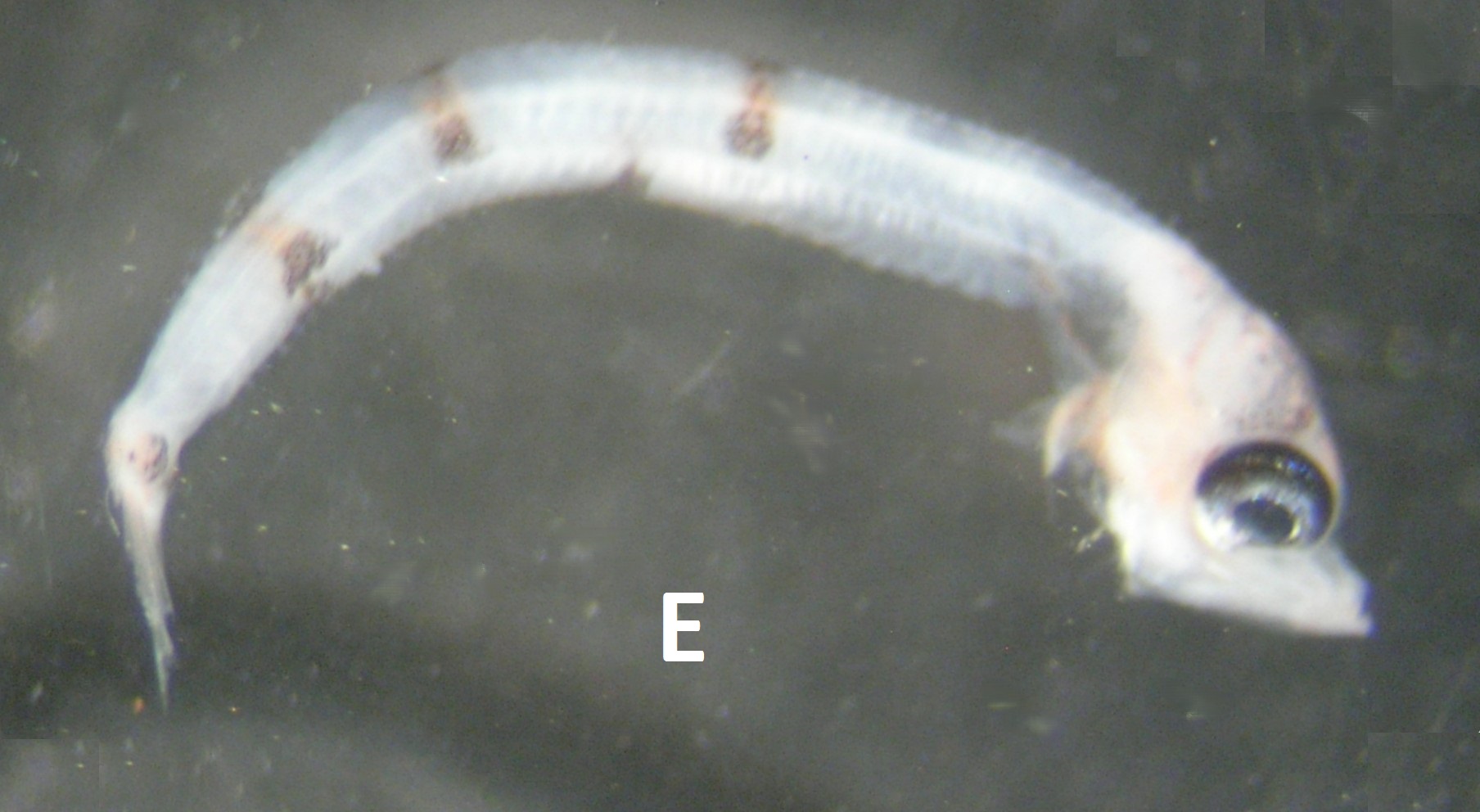Chiasmodontidae: L II A8
Chiasmodon niger Johnson, 1863.
Swallower





|
Egg diameter in µm |
Number of oil globules |
Diameter of oil globule in µm |
Yolk texture |
Perivitelline space |
Position of oil globule at hatch |
Gut length at eye- pigment stage |
Myomeres |
|
1150-1345 |
1 |
310-340 |
clear |
narrow |
stern |
19% of NL |
ca. 42 |
Egg: The size, and large clear oil globule make this egg stant out when present, which is just as well, as it is rare. The yolk is rough-surfaced, but clear, and the oil globule is clear. There are 5-6 big splashy black pigment patches on the embryo and oil globule (B), those in the tail usually forming a continuous band. Incubation is 50-60hours (22-23°C).
Larva: In the early larva, the black pigment is arranged in 6 distinct patches, from in front of the eyes to the notochord tip (C). At 5 days the same arrangement was retained (D). C: 1 day, D: 5 days (22-23°C).
This egg was not successfully reared, but egg numbers were low. Four hatched larvae have been sequenced, and they match Chiasmodon bolangeri, based on an adult sequence in BOLD. Judging from illustrations (Hardy 2006), this is correct. A similar larva collected in my plankton net off Park Rynie, in August 2007, and submitted as C. niger (DSLAF495-08) has barcoded as another species, and needs to be checked against a verified barcode of C. niger. An image of this larva is shown (E).

| Linked samples | Offshore | Inshore |
| Eggs | 21 | 3 |
| Hits | 13 | 3 |
This egg was uncommon off Park Rynie, having been seen on only 17 occasions, all in winter, except for a single December egg (blue graph). The egg was not seen in the DHM samples. The Park Rynie linked samples yielded many more eggs in the offshore samples (88%), which is to be expected for this deep-water species. The adults are mostly found at depths exceeding 750m (Johnson and Keene 1986). See Section 7.3 and Table 1 of the Introductory Notes, for more information on the linked samples.